VALDEZ
Valdez is best known for its role as the port terminal for the Alaska Pipeline.
It became world famous when the Exxon Valdez tanker went aground on Good Friday, 1989, resulting
in the largest oil spill in North American history. This event, although a tragedy for the
ocean and the animals that depend on it, was responsible for an influx of people
and a boost to the local economy. Several buildings were constructed to support
the cleanup effort and they have now become part of the town as hotels and other
business ventures.
Valdez was formed in 1897 as the result of gold seekers coming here to use the "All American
Route" to the gold fields. This route led over the Valdez Glacier into the interior.
Valdez is a year round tourist destination. It is a hub for sport fishing of all
kinds. It has several glaciers nearby that are easy to view. It is also popular
for winter sports. The sheer beauty of the trip getting here, along with its location,
makes it a great place to come and see.
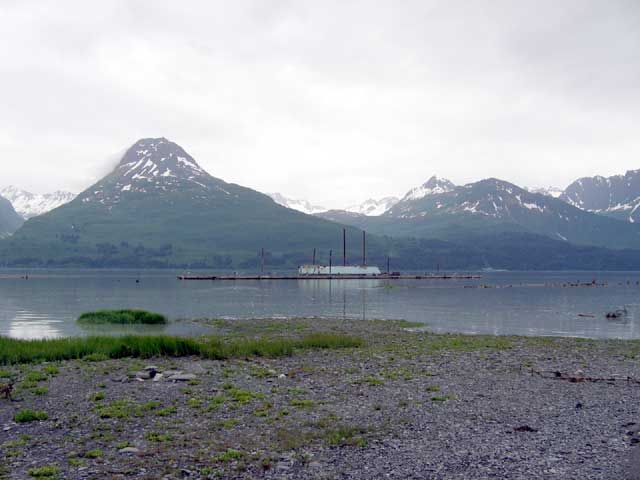
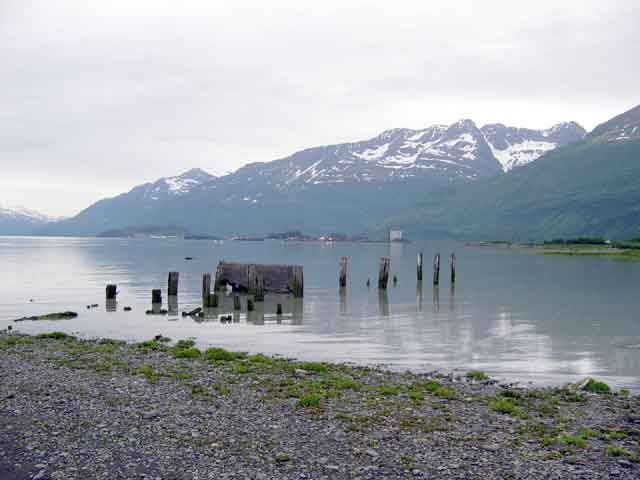
THE 1964 EARTHQUAKE
On March 27, 1964 (Good Friday) an 8.6 earthquake struck Valdez. It lasted over
four minutes and caused almost total destruction of the city. The earthquake started
an under water landslide that resulted in a tidal wave that washed away a large portion
of the town. Over thirty people were killed. The town was condemned because of its
location on unstable ground and over 50 buildings were relocated about four miles
east to the location of the present town.
The pictures are what is left of the old Valdez water front, looking out over
the sound. You can see the new town in the distance in the picture on the left.
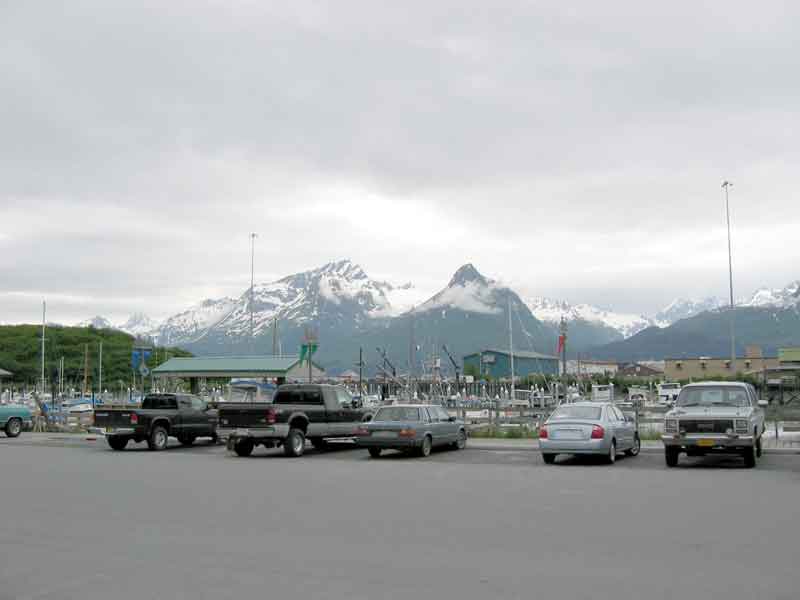
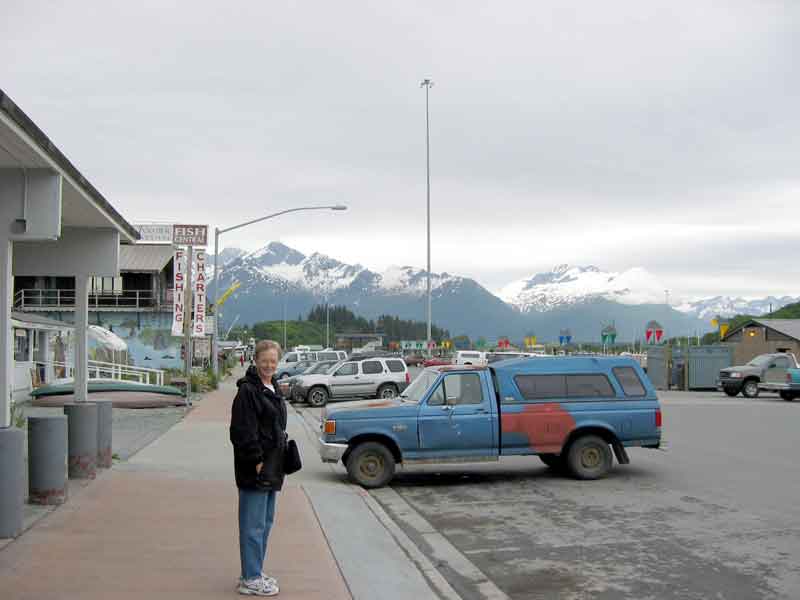
DOWNTOWN VALDEZ
This is not a very large community. It is built around the harbor that provides
shelter for both commercial and private boats. The oil tankers anchor out in the
sound to take on oil from the Alaska Pipeline terminus on the other side of the
sound from the town.
It has several museums that are worth
seeing, especially for their historical content. One even has a complete model of
the old town, as it was when the earthquake hit. There are schools to support the
area, even a community college.
SIGHTSEEING
There are lots of things to do and see on the trip to Valdez and around the area
while you are here.
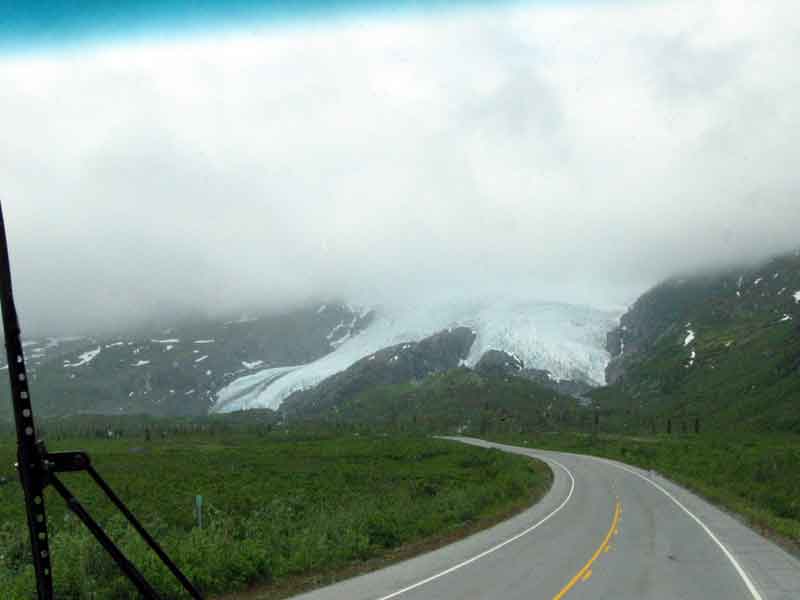
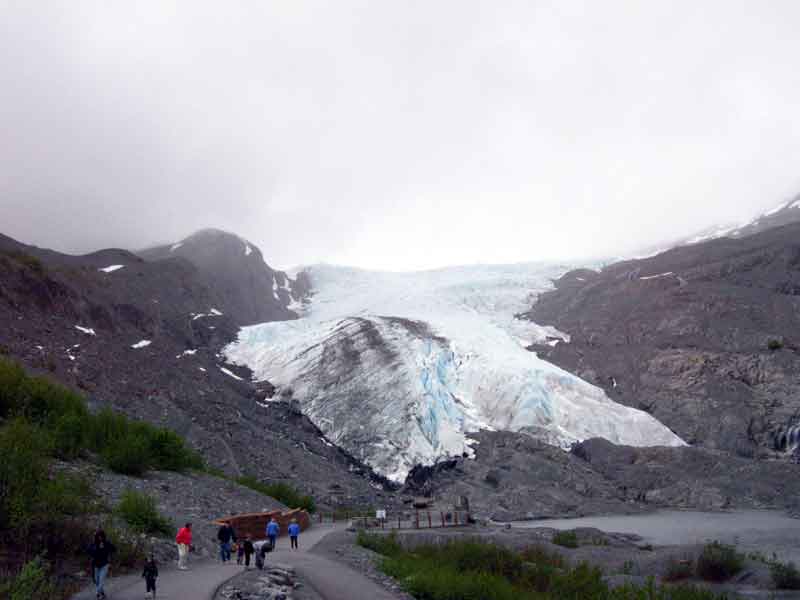
The Worthington Glacier on the road to Valdez.
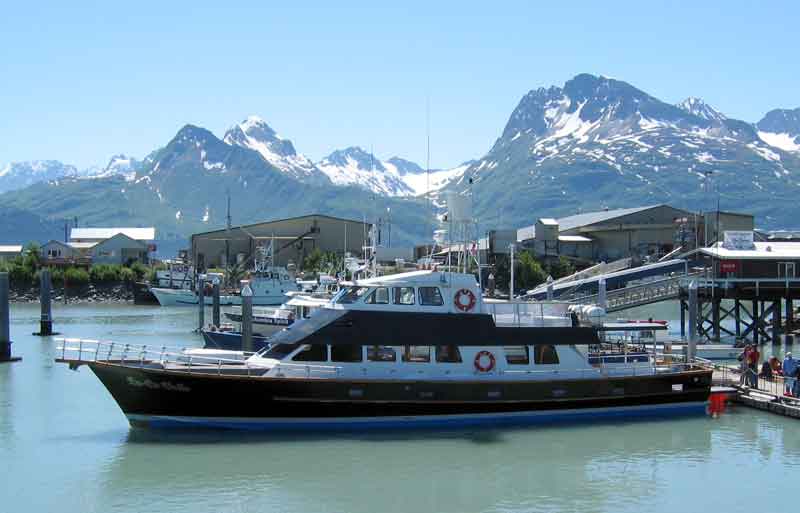
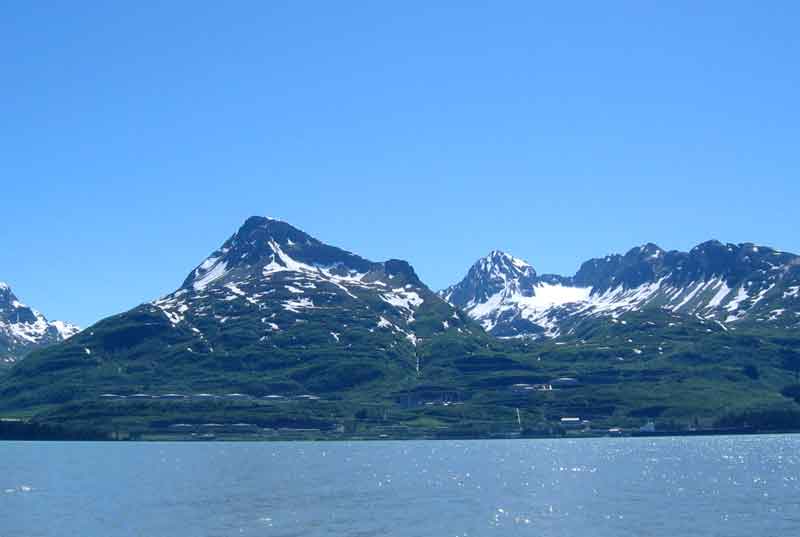
Left: Our sight seeing boat for the Prince William Sound
Right: The oil terminal for the Alaska Pipeline
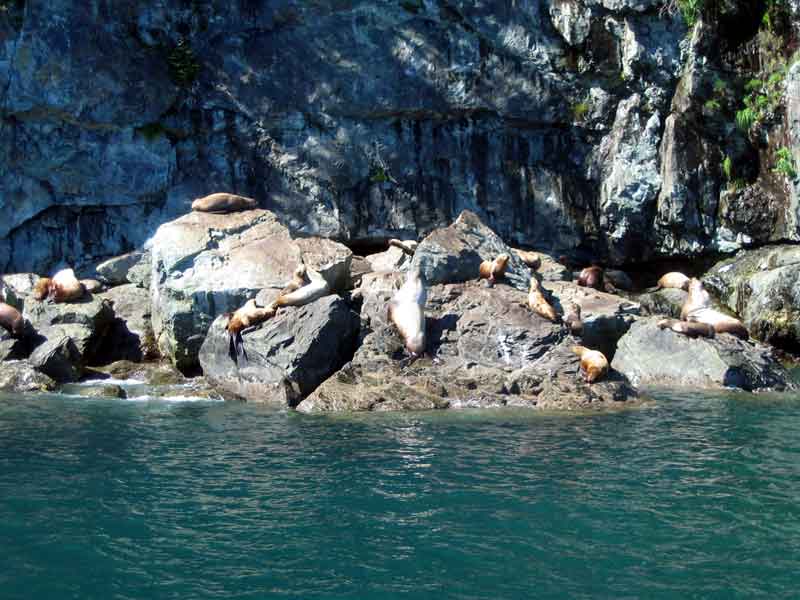
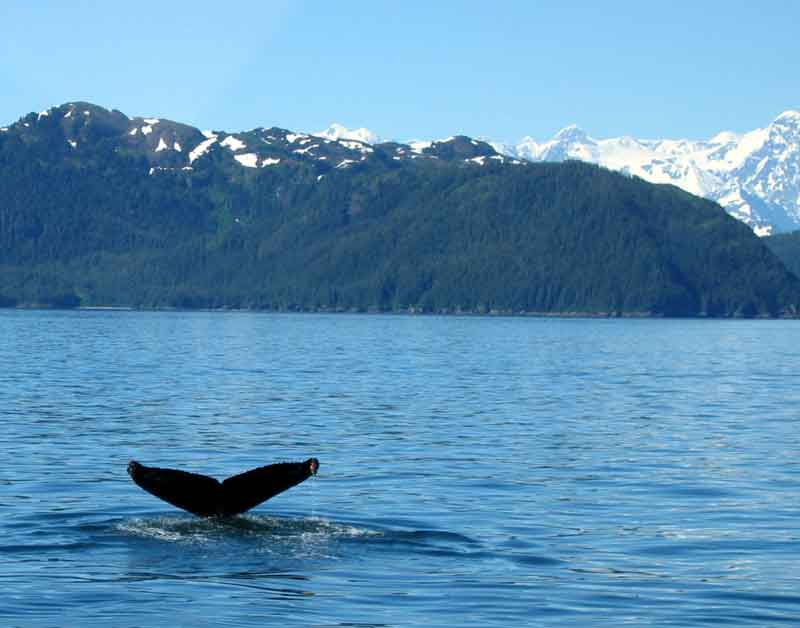
Left: Part of a large group of Stellar sea lions.
Right: A humpback whale as it dives.
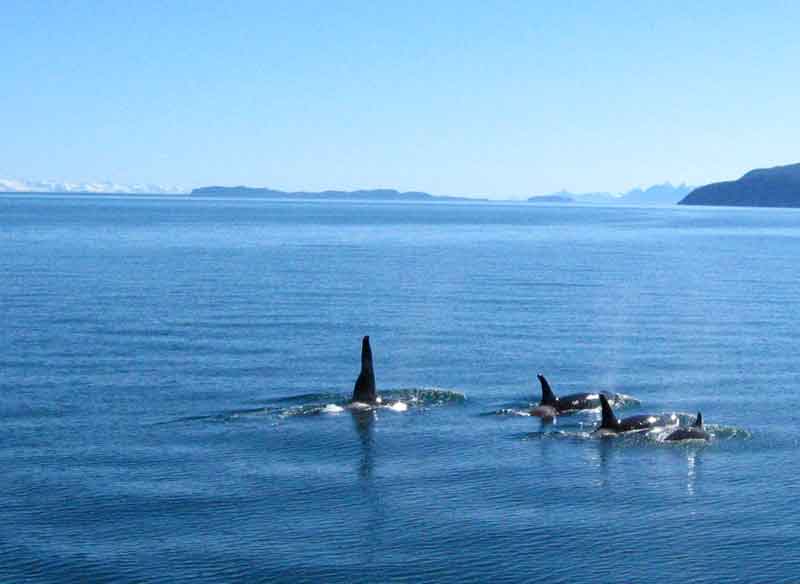
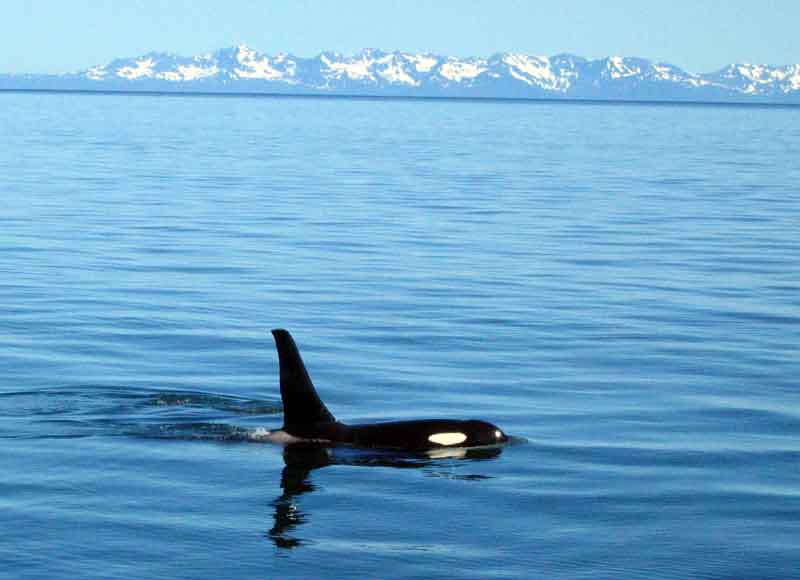
Left: A pod of Orca or "Killer Whales"
Right: The alpha male of the pod.
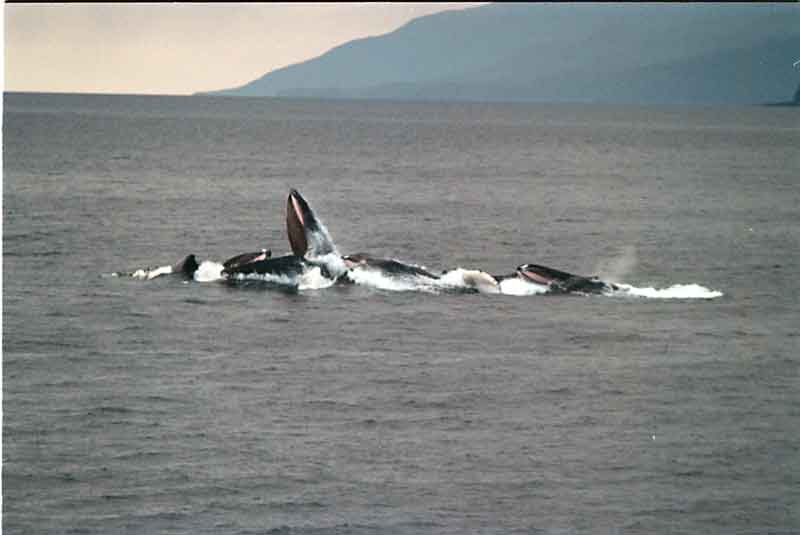
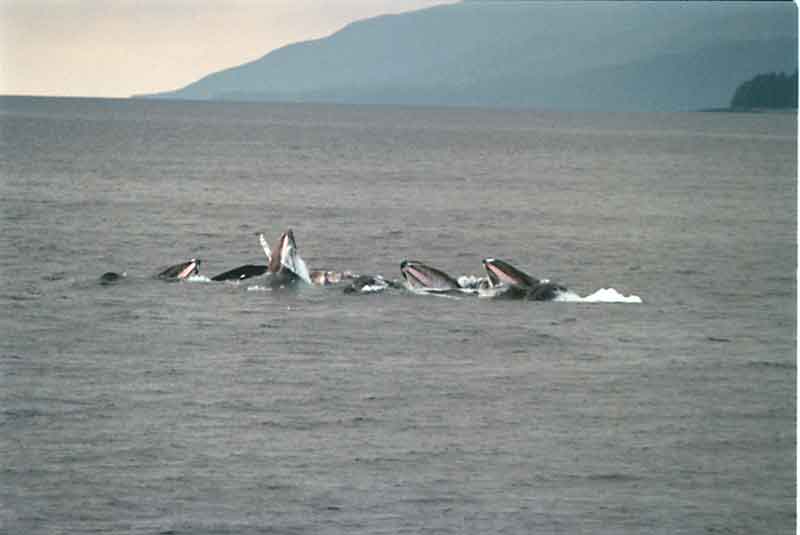
BUBBLE NET FEEDING
While taking our sightseeing tour onboard the Lu-Lu Belle, we were watching a humpback
whale and while it was down we saw some bubbles rising to the surface. The skipper
remarked that the whale might be the source of the bubbles, and it reminded us of the last
time we were in Alaska.
It was in the summer of 2000, and we left our rig in Haines and took
an Inland Passage cruise with Special Expeditions. During
that cruise we were privileged to witness a pod of humpback whales feeding on a
school of herring using an extraordinary technique called "bubble net feeding".
While performing this procedure a pod of whales cooperate by circling under a
school of fish and blowing bubbles. As the bubbles rise to the surface, they form
a cylinder that surrounds the fish, a vertical net of bubbles. The whales then all enter the
bottom of the bubble net and rise vertically to the surface with their mouths open
and filtering the fish through their baleen. They surface all together as shown in
the pictures. They do this repeatedly until they have eaten their fill or the
supply of fish is exhausted.
This is a rare sight to see and the naturalists on our small ship were going ballistic.
They had all read about this behavior but none had seen it in real life. We stayed
and watched until it was over, probably 45 minutes to an hour.















